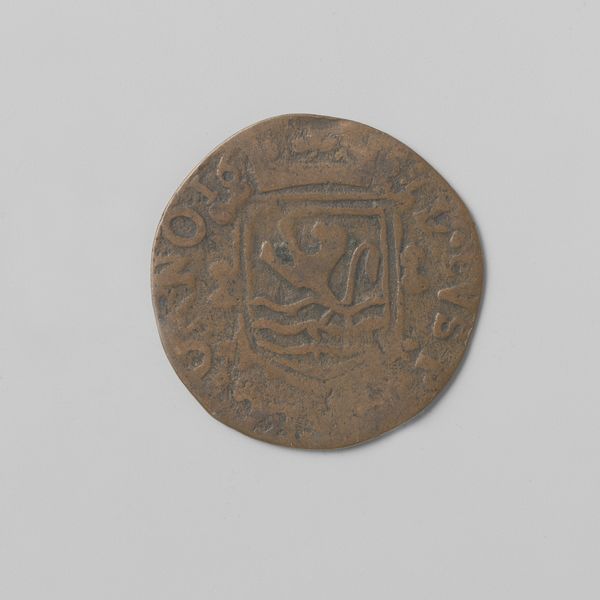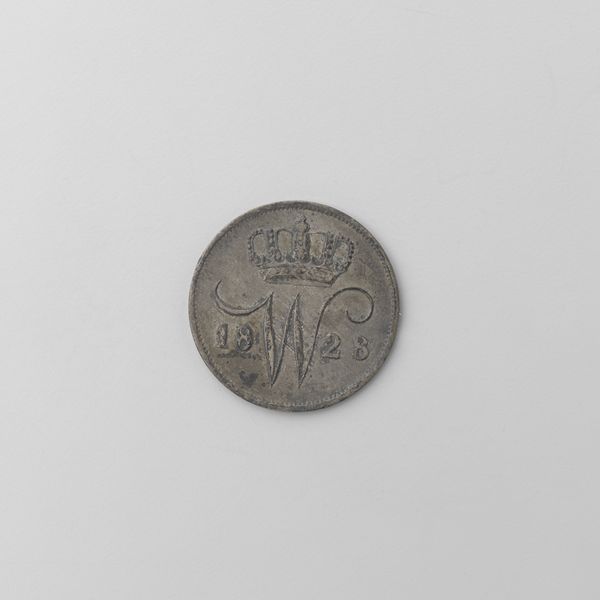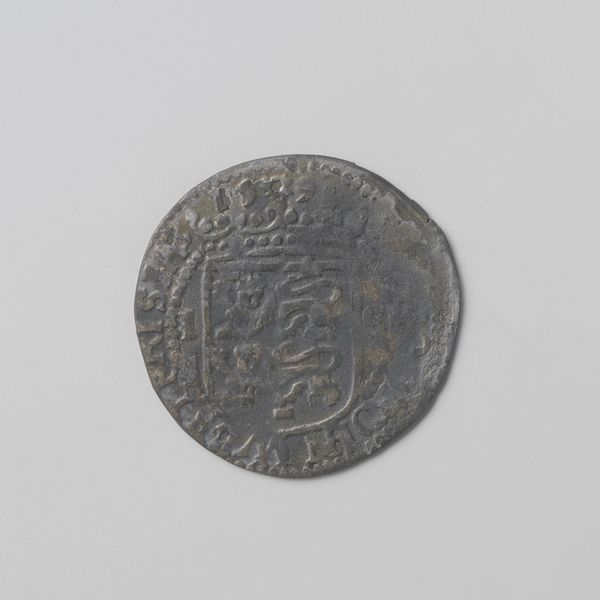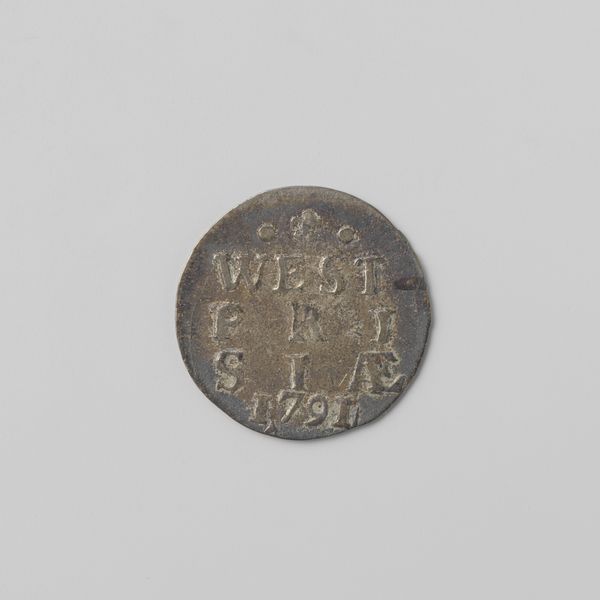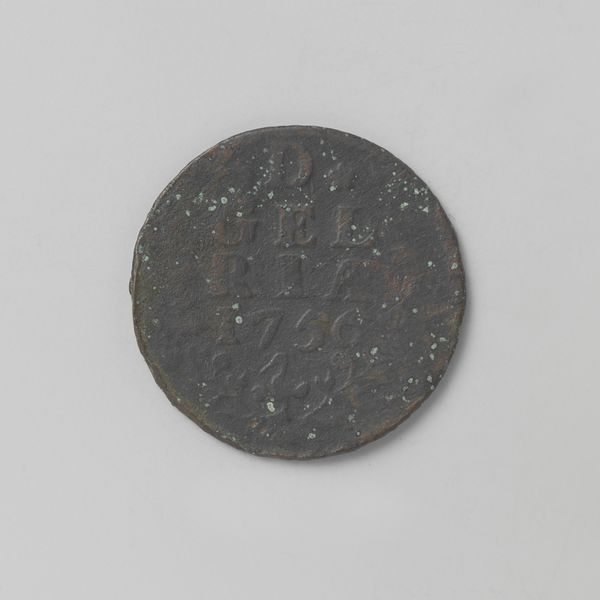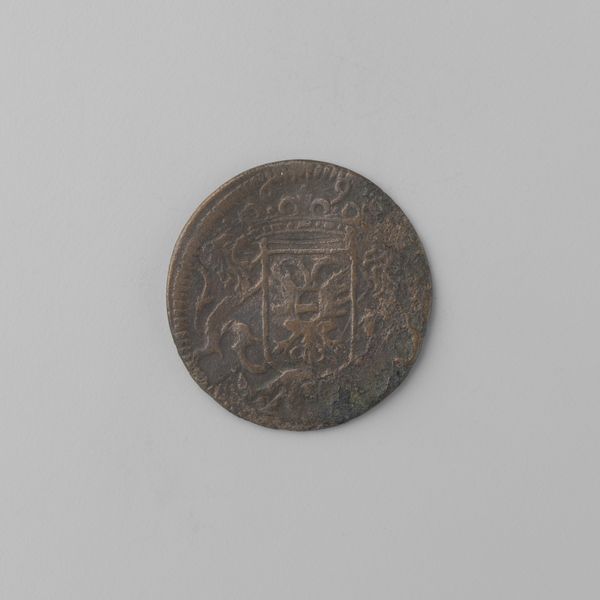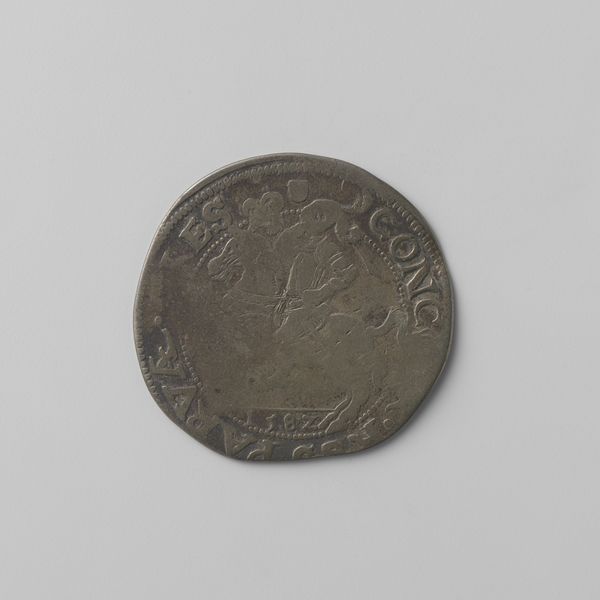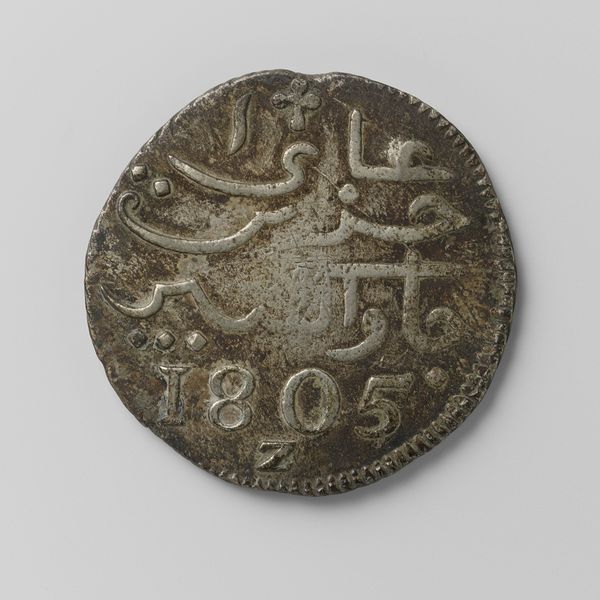
metal, sculpture
#
metal
#
sculpture
#
geometric
#
ancient-mediterranean
#
sculpture
Dimensions: diameter 2.3 cm, weight 1.20 gr
Copyright: Rijks Museum: Open Domain
This is a Hollandse groot, made by Filips II, King of Spain, sometime between 1555 and 1598. At just over 2cm in diameter, the coin presents a circular form, worn with age and use. This muted, silvery surface is not merely a result of the material, but an active agent in conveying meaning. The symbolic language here is rigidly structured. The composition is dominated by a central cross, dividing the coin into quadrants, each filled with heraldic symbols. This division speaks to the organization of power and kingdom. Consider how the coin’s physical form and design work together. Its small size demands an intimate engagement, yet its symbols broadcast power across distances. This tension highlights how objects can function as both personal tokens and instruments of governance. We can view the distribution of space, symbols and forms as a concentrated display of authority. Its form as a philosophical reflection on how power is asserted, negotiated, and perceived.
Comments
No comments
Be the first to comment and join the conversation on the ultimate creative platform.
